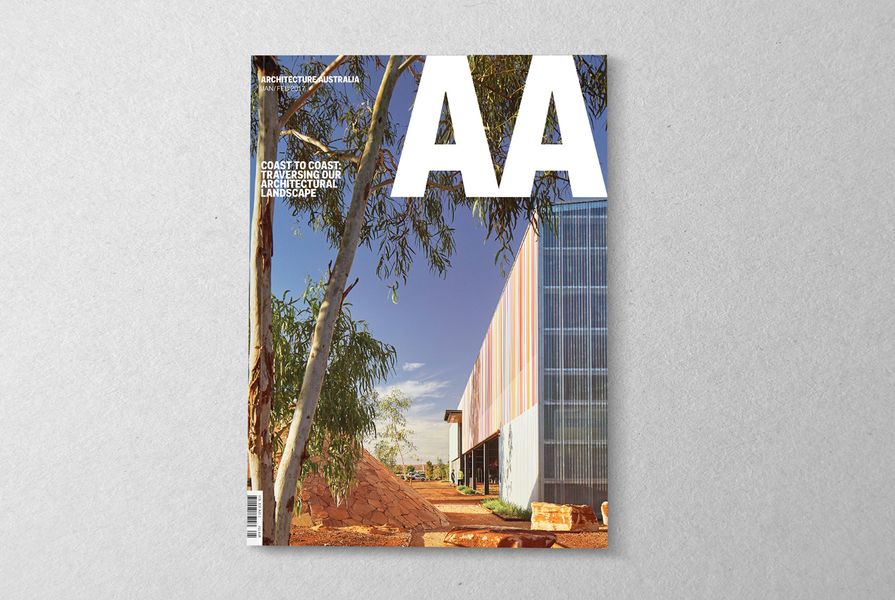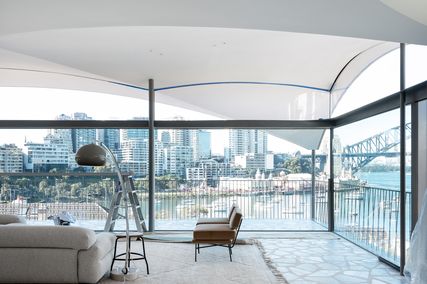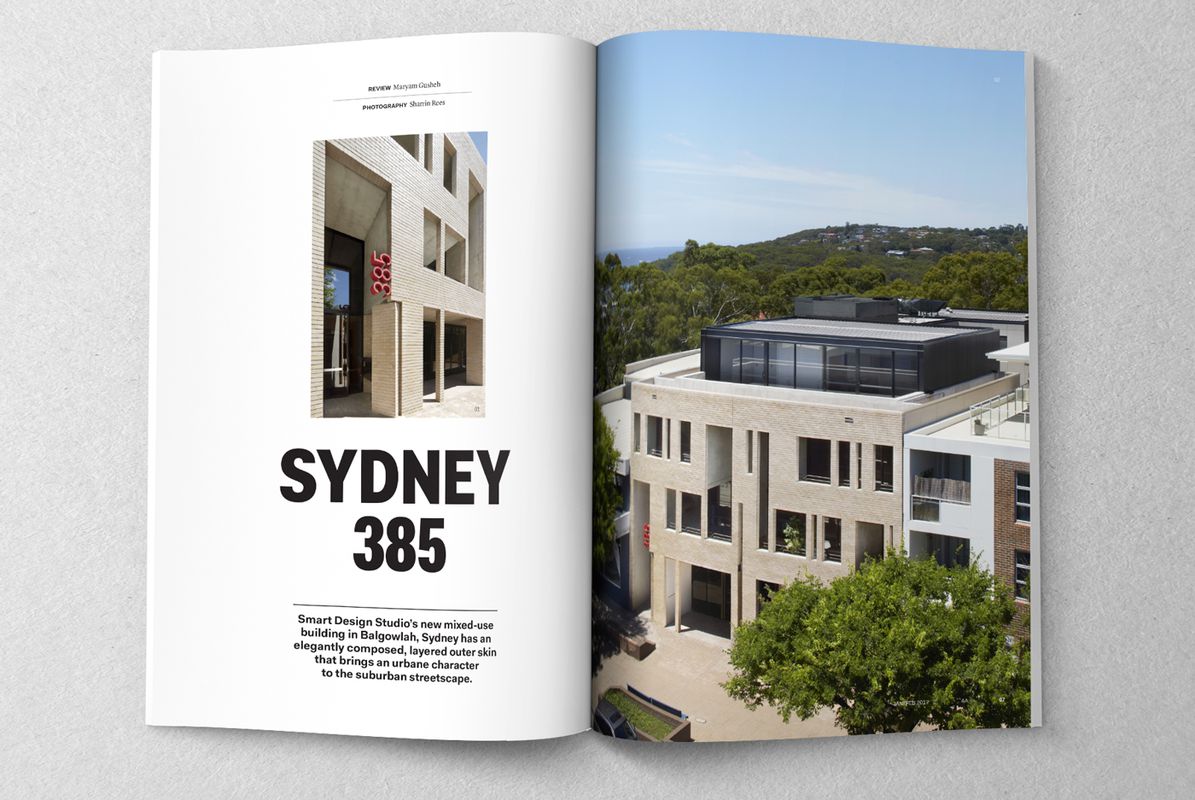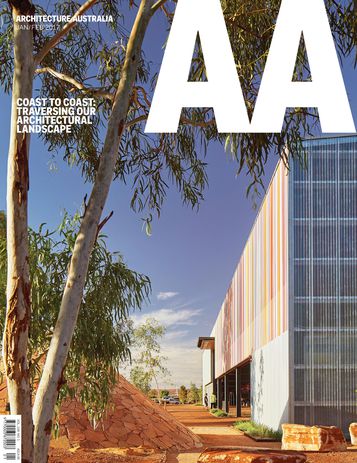
Architecture Australia January/February 2017.
Speculating on what the Donald Trump presidential victory means for Australia, writer and broadcaster Annabel Crabb described the demography and geography of the situation. In her article in The Sydney Morning Herald titled “Australian politicians are terrified of where Angry White Man will strike next,” Crabb cheekily asserts that, “Cities are very five minutes ago.” The disconnect between city and country, be this perceived or actual, local or international, has unsettled the global political landscape. The aftermath of the US election has architectural critics like Rem Koolhaas calling for a rebalancing of the discipline’s engagement with cities and countryside. In an interview for Dezeen soon after the election, Koolhaas observed, “In the last 10–15 years we have almost exclusively looked at cities,” noting that “90 or even 99 percent of intellectual activity is focused on urban issues.” Koolhaas is advocating for a better understanding of the profound transformation of rural areas. He makes his point through radical typological examples that suggest that it is the interconnectedness of city and country and the inescapable outcomes of urbanization that really matter (both in theory and on the ground).
The architectural ambit must transcend the political flight from downtown to outback and there is a compelling case for Australian architecture’s engagement with the diversity of the nation’s cities, towns and settlements. As highlighted in this journal, the profession has long advocated for the equitable demographic and geographic distribution of architecture. Most recently, the Dossier “Reporting from the (Australian) Front: housing in extremis” (Sept/Oct 2016), guest-edited by Kelly Greenop and Naomi Stead, explored the ways in which Australian architects are addressing the needs of the most vulnerable members of our society. Many of the projects reviewed in Architecture Australia in recent years are exemplary in their response to the issues facing remote, regional and suburban communities – including the New Kununurra Courthouse by TAG Architects and Iredale Pedersen Hook Architects (May/June 2015), the Stawell Steps by Monash University architecture students and Japanese artist Hiroshi Nakao (May/June 2013) and the GASP! in Hobart by Room 11 (Jan/Feb 2014). The profession is actively advocating for more political engagement in the shaping of Australia’s cities. The critical relationship between density and amenity is thoughtfully articulated in articles such as “Single house – no future?” by Kerstin Thompson and “On the architecture of housing” by Philip Thalis (Jan/Feb 2016).
The projects in this issue traverse the nation coast to coast. Together they describe the impact of architectural endeavour across the nation’s demography and geography – from Newman in the East Pilbara region of Western Australia to the Townsville suburb of West End in Far North Queensland.
Cameron Bruhn, editorial director, Architecture Australia
Follow Architecture Australia on Twitter
Subscriptions and back issues: Print and Digital
Source
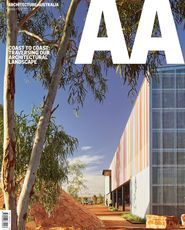
Archive
Published online: 27 Jan 2017
Words:
Cameron Bruhn
Images:
Michael Nicholson,
Peter Bennetts,
Robert Frith,
Sharrin Rees,
Toby Scott
Issue
Architecture Australia, January 2017

